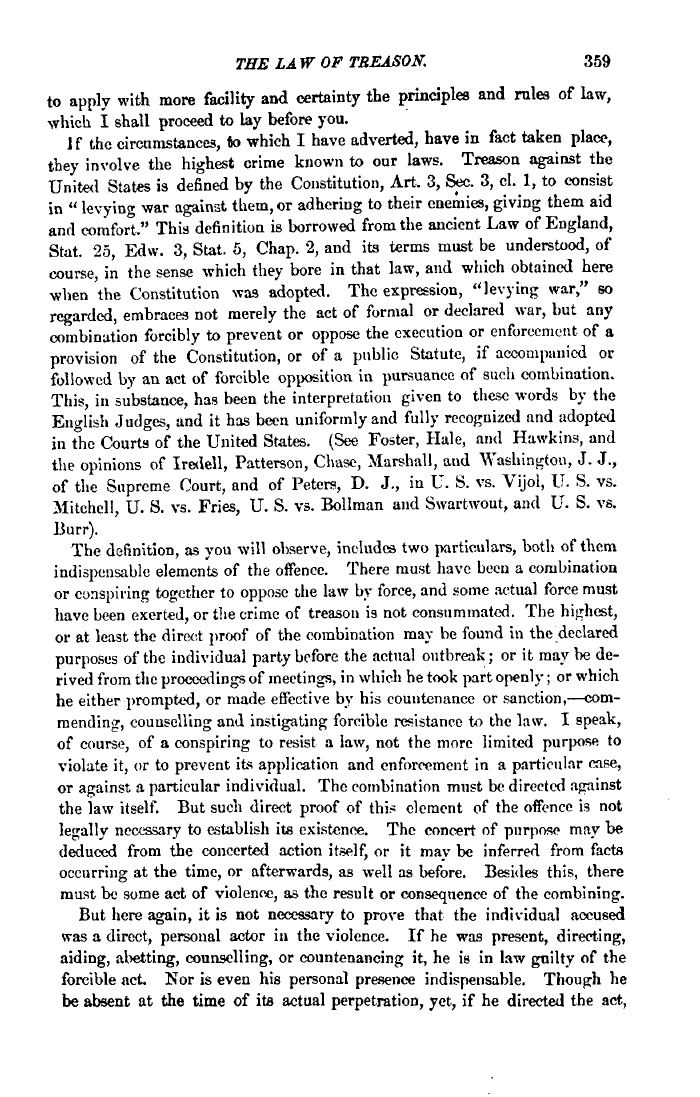 |
||||
 |
||||
| THE LA W OF TREASON. 359 to apply with more facility and certainty the principles and rules of law, which I shall proceed to lay before you. 1 f the circumstances, to which I have adverted, have in fact taken place, tbey involve the highest crime known to oar laws. Treason against the United States is defined by the Constitution, Art. 3, Sec. 3, cl. 1, to consist in " levying war against thetn, or adhering to their enemies, giving them aid and comfort." This definition is borrowed from the ancient Law of England, Stat. 25, Edw. 3, Stat. 5, Chap. 2, and its terms must be understood, of course, in the sense which they bore in that law, and which obtained here when the Constitution was adopted. The expression, "levying war," so regarded, embraces not merely the act of formal or declared war, but any combination forcibly to prevent or oppose the execution or enforcement of a provision of the Constitution, or of a public Statute, if accompanied or followed by an act of forcible opposition in pursuance of such combination. This, in substance, has been the interpretation given to these words by the English Judges, and it has been uniformly and fully recognized and adopted in the Courts of the United States. (See Foster, Hale, and Hawkins, and the opinions of Iredell, Patterson, Chase, Marshall, and Washington, J. J., of the Supreme Court, and of Peters, D. J., in U. S. vs. Vijol, U. S. vs. Mitchcll, U. S. vs. Fries, U. S. vs. Bollman and Swartwout, and U. S. vs. Burr). The definition, as you will observe, includes two particulars, both of them indispensable elements of the offence. There must have bocu a combination or conspiring together to oppose the law by force, and some actual force must have been exerted, or the crime of treason is not consummated. The highest, or at least the direct prrx>f of the combination may be found in the declared purposes of the individual party before the actual outbreak; or it may be derived from the proceedings of meetings, in which he took part openly; or which he either prompted, or made effective by his countenance or sanction,—commending, counselling and instigating forcible resistance to the law. I speak, of course, of a conspiring to resist a law, not the more limited purpose to violate it, or to prevent its application and enforcement in a particular case, or against a particular individual. The combination must be directed against the law itself. But such direct proof of this clement of the offence is not legally necessary to establish its existence. The concert of purpose may be deduced from the concerted action itself, or it may be inferred from facts occurring at the time, or afterwards, as well as before. Besides this, there must be some act of violence, as the result or consequence of the combining. But here again, it is not necessary to prove that the individual accused was a direct, personal actor in the violence. If he was present, directing, aiding, abetting, counselling, or countenancing it, he is in law guilty of the forcible act Nor is even his personal presence indispensable. Though he be absent at the time of its actual perpetration, yet, if he directed the act, |